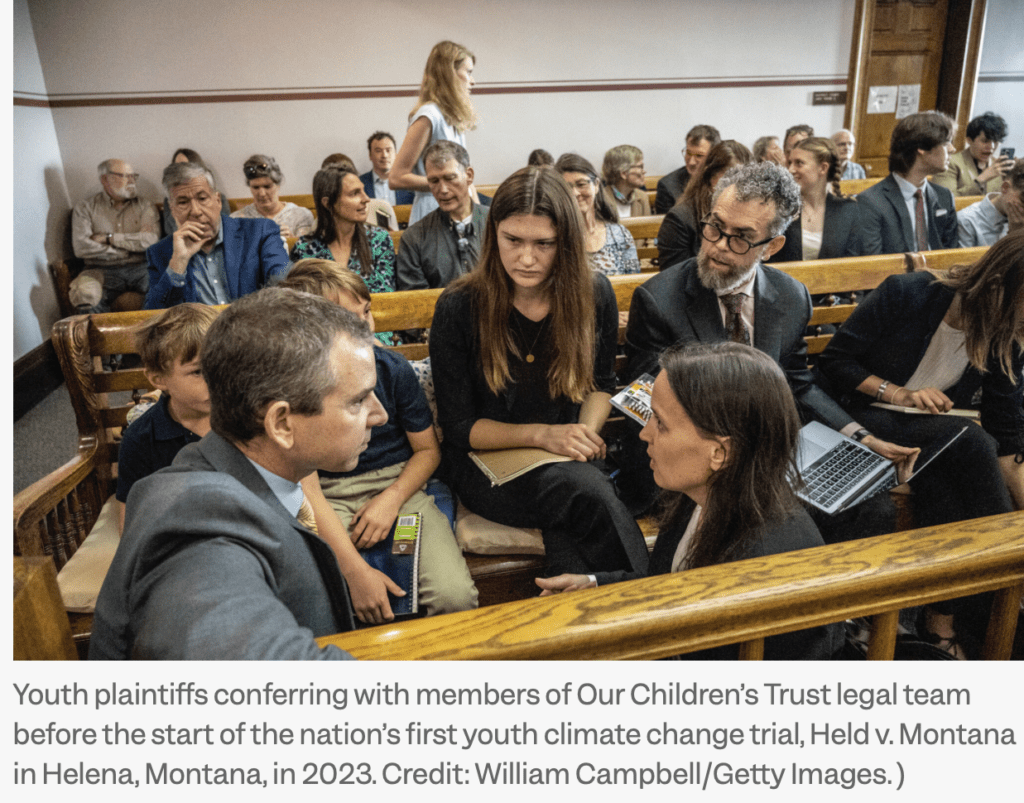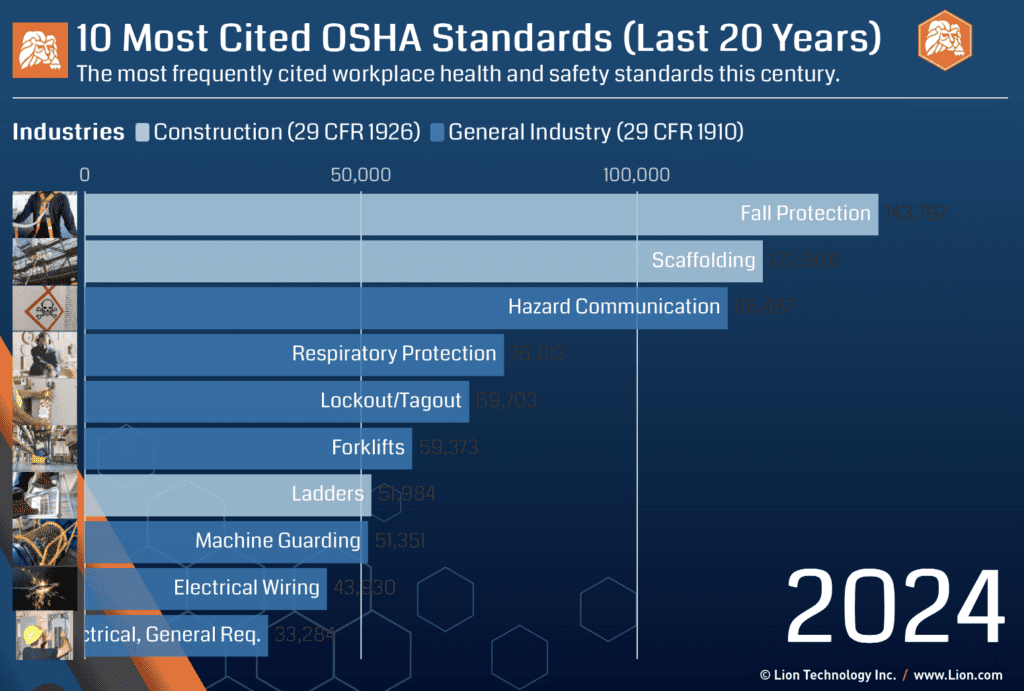Daniel Salzler No. 1274
EnviroInsight.org Six Items October 4 2024
—————Feel Free To Pass This Along To Others——————
If your watershed is doing something you would like others to know about, or you know
of something others can benefit from, let me know and I will place it in this Information .
If you want to be removed from the distribution list, please let me know.
Please note that all meetings listed are open.
Enhance your viewing by downloading the pdf file to view photos, etc.
The attached is all about improving life in the watershed through knowledge.
If you want to be removed from the distribution list,
please let me know. Please note that all meetings listed are open.
Check our website at EnviroInsight.org
1. Republic Breaks Ground On Arizona Blue Polymers Plant. Plastics packaging recycling joint venture backed by Republic Services is building a new reprocessing facility in Buckeye, Arizona.

Representatives from Blue Polymers LLC, Republic Services and the city of Buckeye, Arizona, have broken ground on a Blue Polymers recycled plastics production facility in the Western United States.
When it opens in the second half of next year, the planned 162,000-square-foot plant will support sustainable packaging manufacturing throughout the Western U.S., according to the parties involved.
The Buckeye Blue Polymers facility, announced this May, will produce recycled-content polyethylene (PE), such as high-density polyethylene (HDPE) used in milk jugs and detergent bottles, and polypropylene (PP), frequently used in packaging such as margarine tubs and yogurt cups.
“These plastics will be processed and formulated into high-quality, drop-in recycled plastic solutions for the packaging industry,” Blue Polymers and Republic say.
Phoenix-based Republic Services, a joint venture (JV) partner in Blue Polymers, is developing a network of regional Polymer Center plastics recycling facilities. Those centers are designed to sort recyclable plastics sourced from Republic’s national curbside collection operations by resin and color.
Each Republic Services Polymer Center will be paired with a Blue Polymers facility, with the Buckeye facility to process materials from Republic’s Las Vegas Polymer Center, which opened in late 2023.
“Blue Polymers was created to meet the need for high-quality recycled plastics for use in consumer packaging and other applications,” says Tim Oudman, senior vice president at Republic Services and a member of Blue Polymers’ board of directors. “We appreciate the support we’ve received from the city of Buckeye and the Arizona Commerce Authority for this project, as well as from our development partners Merit, FCL and Butler Design Group.”
“This regional recycling plant solidifies Buckeye’s commitment to bringing high-quality, advanced manufacturing jobs to our residents,” Buckeye Mayor Eric Orsborn adds. “Blue Polymers’ investment in the city, along with their innovative strategies to use recycled plastics for everyday consumer products, will ensure we remain a vibrant, sustainable community.”
Republic says demand is rising for domestically sourced, high-quality recycled plastics because of both voluntary sustainability commitments and state legislation.
“We are excited to celebrate the groundbreaking of Blue Polymers’ recycled plastics production facility in Buckeye,” says Sandra Watson, president and CEO of the Arizona Commerce Authority. “The addition of this facility adds to Arizona’s leadership in sustainable technologies while creating more jobs for Arizona residents.”
Blue Polymers says its facilities are being built to support true package-to-package circularity, with an annual production target of 300-plus million pounds (tons) of recycled resins. The Buckeye facility joins a previously announced Indianapolis location as part of Blue Polymers’ network of four regional facilities. Source: Waste Today Sept 26, 2024
2. How To Talk To Anxious Children About Climate Change.
For years, educators and parents often avoided the subject. But that is starting to change, as

therapists urge parents to listen to their kids and help them understand that their fears are normal.
At 21, Olivia Vesovich has already put more on the line for the climate fight than most people, regardless of age. In 2020, Vesovich was just 16 and wrapping up her sophomore year of high school when she decided to sacrifice her privacy and step onto the national stage as one of the 16 youth plaintiffs represented by Our Children’s Trust in the Held v. Montana lawsuit.
Vesovich first heard about the search for plaintiffs when the faculty advisor for Students Against Violating the Environment (SAVE) approached the club members at Hellgate High School in Missoula about the possibility of signing on as plaintiffs in the suit seeking to hold the Montana state government accountable for not doing more to counter the worsening climate crisis.
Confidently quirky with a broad smile and her signature purple hair, Vesovich was the only Held plaintiff to testify in court directly about her climate despair. “I felt paralyzed… like I couldn’t live my life, because I knew that every single action I took I was helping destroy the planet. I was so afraid to consume anything,” said Vesovich, whose crippling guilt over her environmental impact extended even to food and water.

Only in the last two or three years have educators and therapists started to get a clear picture of just how much damage future uncertainty and feeling constantly unsafe from the planet itself can have on children and their developing minds. One long-time therapist compares the impact of climate change on children to child abuse, noting how in both instances children are betrayed by institutions or people they were meant to trust. Recently psychologists have coined the phrase “moral injury” to describe the wounds they suffer when they realize those supposedly safeguarding their wellbeing are actively harming them.
For the last two decades parents and educators have been muddling through climate discussions without any clear guidelines or idea of the consequences, thoughtlessly introducing kids to climate change without providing the proper emotional support. But this is now starting to change.
New curriculum is being developed to fill gaps between climate education and emotional support while educators and therapists work to help under-supported parents and other family members figure out how to talk to their children about climate change.
Such conversations are not easy, said psychiatrist Lise van Susteren, who thinks these “moral injuries” at such a young age can have lifelong consequences, leading to the loss of faith in social bonds, cynicism and anxious disconnection from others.

But van Susteren said that by presenting climate change in a more nuanced manner, parents and teachers can help kids feel empowered to take action, so that they feel like they are joining an ongoing fight instead of starting a battle they have already lost. And thanks to greater climate consciousness among therapists, and lawsuits like Held v. Montana, there is a growing push to provide more support for the parents and educators who face these tough conversations every day.
Harry Waters is one of the educators working to fill the gaps between climate education and emotional support. Waters, a long-time English teacher turned education consultant, had been incorporating climate change into his English curriculum for years when, in 2020, the pandemic gave him a needed push to create Renewable English for those learning English as a second language.
The curriculum focuses on combining English instruction with tools for climate action. Now, four years later, he works full-time as a climate education consultant, introducing other teachers to the Renewable English curriculum. It includes lessons for English learners about water waste and ocean pollution, including vocabulary words like “micro plastic” and “marine debris.” It also tests students’ listening comprehension by giving them a true/false quiz based on an information video on ocean plastic.
When he created Renewable English, a program which he first launched in the U.K. and is now sharing in Spain, Waters didn’t expect climate grief counseling to play such a large role in his work. But with child and adolescent mental health resources stretched near the breaking point and climate-aware therapists still few and far between, Waters has become the de facto climate counselor at the schools he visits.
One 12-year-old girl from Sevilla stands out in particular. When they first met, she was “this happy, bubbly kind of person, and the next year she was just a shadow of herself,” said Waters.
While she “hadn’t been hugely affected by any ecological event,” Waters said, she “had just gotten into the habit of doom scrolling and looking at how bad everything was.”
When the student became despondent, her teachers “just didn’t know how to deal with it,” said Waters. In cases like this, it is vital to involve the parents, family and wider community, he said.
When he first met with the student, “there wasn’t enough of a support network around her,” said Waters, who was only at the school occasionally, running workshops once or twice a month.
Waters took on the role of unofficial counselor, “trying to encourage her to look for her passion, to find something that she could make a difference with,” he said.
“It was kind of tragic,” said Waters. The most compassionate and empathetic kids most often get stuck in a doom spiral because they want to help so much that they forget to take care of themselves, he explained.
But students must be encouraged not to give up. “While it’s incredibly tempting, it’s not the answer,” he said. “We need people who have those strong feelings about the climate crisis to fight for what is right and what is good, because you care.”
Waters was eventually able to help the student start a letter writing campaign aimed at the parents and wider community around her school to try and raise funds for solar panels to power the school. “She thought it was just a small thing, but to have that focus, to look towards, it gave her purpose,” said Waters.
A Gen Z Board of Advisors
The challenges educators face in helping students cope with climate change, intellectually and emotionally, are equalled, if not surpassed, by the challenges confronting parents. Sarah Newman, founder and executive director of the Climate Mental Health Network, an organization devoted to normalizing conversations about climate anxiety, is creating guides that help parents talk to their kids about climate.
In support of that work, Newman created a board of advisors made up entirely of Gen Z members—people born between 1997 and 2012. Who better to help direct programing than the people they are aiming to support?
For now, the advisory board has been busy at work reviewing and giving input on resources for parents and teachers, helping create the guides fostering dialogue on the climate crisis between kids and parents.
The guides explain, said Newman, “that having climate emotions is a normal response to the climate crisis, to not be dismissive of what kids are going through, but to not be Pollyanna, either.” One resource, “The ABC’s and L’s of Talking Climate with Kids,” created by van Susteren, walks parents through tailoring a climate conversation with their children as individuals, starting with giving age appropriate information, tailoring the content to a child’s typical behavior (are they a quiet bookish animal lover who would gravitate towards knowledge of endangered species, or an athletic extrovert who might be more interested in learning how bad air quality makes it harder to play outside?). And finally keep in mind the conditions in which a child is growing up.
A conversation with a child whose house burnt down in a wildfire would need a different approach than a climate talk with a kid who has only ever seen the effects of climate change on TV. All this, in van Susteren’s guide, should be buffered by the three Ls: Listen to your child, learn for yourself before you try to teach them, and leverage your lessons into meaningful climate action.
Giving kids realistic, but not hopeless information on climate, and respecting their feelings can go a long way in alleviating the psychological trauma associated with climate change, van Susteren says.
3. Top Ten OSHA Violations of 2024. Source: OSHA
5 Most Cited General Industry Standard Violations (Fiscal Year 2024)
1: Hazard Communication 2,888 citations.
The Hazard Communication Standard (HCS) requires employers to provide workers with training and information about hazardous chemicals in their workplace. From toxic gases to cleaning products, chemical hazards must be communicated to employees using written HazCom programs, hazard labels/warnings, Safety Data Sheets (SDS), and training.
2: Respiratory Protection 2,470 citations
Employers must complete medical evaluations and perform fit testing for employees who are required to wear respirators. These steps ensure that the employee can safely wear the respirator while working and that the respirator will function properly.
Training on proper respirator use and maintenance is also required. Like many of the other standards on this list, adequate employee training is a common reason that OSHA cites employers for noncompliance.
3: Lockout/Tagout or Control of Hazardous Energy 2,433 citations
The unexpected release of hazardous energy during machinery use, maintenance, and servicing can result in severe injuries, amputations, and death.
Failure to train employees on proper lockout/tagout procedures is one of the most common reasons OSHA issues citations—and why LOTO is a mainstay on the annual Most Cited Violations list.
4: Forklifts/Powered Industrial Trucks 2,248 citations
Typically, the most common reasons employers are cited for noncompliance with the forklift Standard is failing to properly train, certify, and re-certify forklift drivers.
5: Machine Guarding 1,541 citations
OSHA requires employers to identify workplace machinery that can cause injury to an employee. Machine injuries can occur at the point of operation, from rotating and/or moving parts, or from flying chips or sparks. Employers in manufacturing industry sectors see the largest number of citations for violations of machine guarding requirements by far.
5 Most Cited Construction Standards for FY 2024
Fall protection violations in the construction industry topped the 10 Most Cited List once again in FY 2024. OSHA issued citations for approximately 15% fewer violations combined in these categories compared to FY 2023 (17,294 → 14,617).
The five most cited Construction Standard Violations in FY 2024 were:
- Fall Protection (6,307 violations)
- Ladders (2,573 violations)
- Fall Protection Training (2,050 violations)
- Scaffolding (1,873 violations)
- PPE: Eye and Face Protection (1,814 violations)
OSHA’s Top 10 Most Cited This Century
The “OSHA Top 10” data collected from industry publications and news archives.
This chart adds up the total number of citations as reported by OSHA for each Standard listed among the 10 Most Cited in each year from 2002 through 2024

4.. Do You Know Enough About Your Lithium Batteries To Stay Safe? Complete answers found at end.
A. Approximately how many rechargeable devices did the average passenger bring on to an airplane? (Circle the best answer)
1
2
3
4
B. How many incidents were addressed before the occurrence of a fire or explosion?
10%
35%
85%
100%
C. What percentage of reported thermal runaway incidents on passenger flights were attributed to e-cigarette/vaping devices?
10% 35% 85% 100%
D. Which two lithium battery devices were the most cited in reported thermal runaway incidents?
Vaping devices and portable chargers
Laptops and cell phones
Cell phones and vaping devices
Portable chargers and laptops
5. Need Your OSHA 8 Hr. Refresher Training?
Let me know and I’ll put a class together. Contact Daniel Salzler at sconflict@aol.com or 623-203-7178.
6. EPA Upgrades ECHO Database to Add Water Quality Indicators Tool Enhancing Access to Water Quality Data Including Contributors to Pollution
New mapping tool allows users to analyze water data and identify pollution problems in their communities including the potential polluters
WASHINGTON – Today, Sept. 18, the U.S. Environmental Protection Agency released the Water Quality Indicators (WQI) tool, the first EPA interface that allows users to compare millions of data records from water monitoring stations. Facilitated by a mapping tool, the WQI makes it easy to explore nutrient and pathogen data and identify the potential sources that are contributing to water quality problems.
The WQI allows users to see pollutant level trends from nearby monitoring stations and compare to other stations across the country. The tool provides data on facilities including compliance records and as well as environmental justice indicators gathered through EJScreen, EPA’s environmental justice screening and mapping tool. Source: U.S. EPA.
Lithium Batteries Answers:
A. The average passenger brings four rechargeable devices on board. Most common items include smart phones (82%) , laptops (41%), wireless headphones (39%) and tablets (36%) Source: Lithium-Ion Battery Incidents and Their Impact on Aviation Safety, UL Standards 7 engagement 2024
B. Most (85%) incidents in 2023 were addressed when batteries showing warning signs such as overheating and smoking prior to entering full thermal runaway. While only 15% of incident resulted in fire or explosion, the speed in which thermal runaway can develop means that the events in the majority could’ve been more serious, and the issue had not been addressed. Source: Same as A
C. E-cigarettes responsible for the most incidents in 2023 with 35% reported incident attributed to vaping devices on passenger flights, followed by power banks, representing another 16% Source: Same as A
D. The devices that were most cited in thermal runaway incidents in 2023 were also the two most frequently put in checked luggage, according to passengers surveyed. More than a quarter (27%) of travelers reported checking portable chargers and another 27% said they checked e-cigarettes.com. Devices that enter thermal runaway in checked baggage cannot be access by crew while in flight and fires may not be detected as quickly in the cargo as they would be in the cabin. Source: Same as A
Copyright: 2024 EnviroInsight.org
